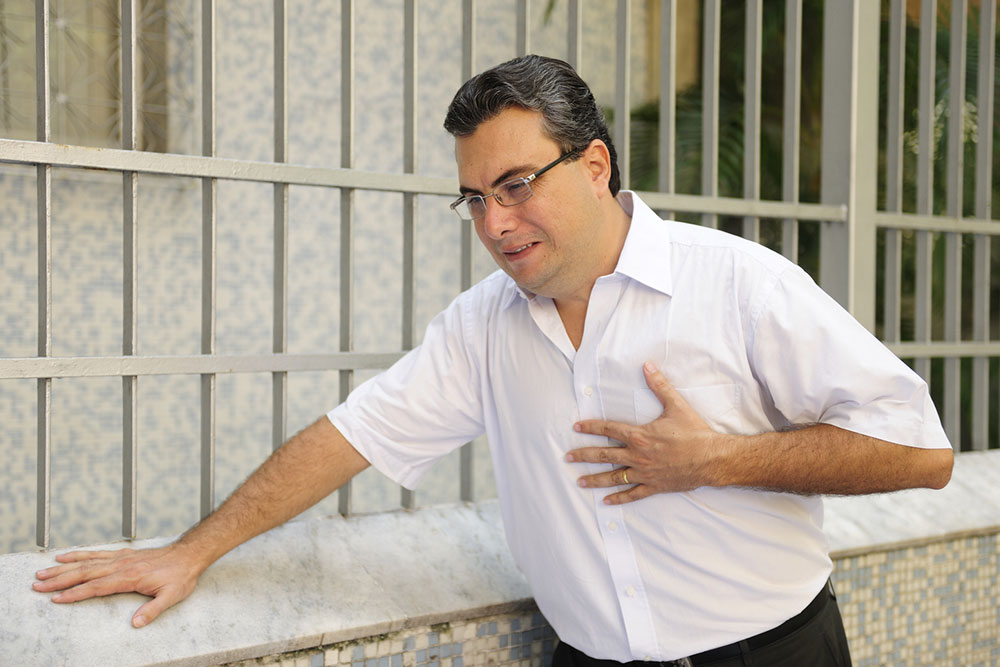7 warning signs of an aortic aneurysm

The aorta is the largest artery in the human body, responsible for carrying oxygenated blood from the heart to different parts of the body. If there is a weakness in the walls of the arteries, they can become enlarged, leading to a condition called an aneurysm. An enlargement or bulging of the aorta beyond 5cm is known as an aortic aneurysm. In the early stages, there are no noticeable signs of an aneurysm.
As the condition worsens, the following signs and symptoms may emerge:
- Pain
A large aortic aneurysm that dissects or leaks blood may result in severe pain in the jaw, neck, or upper back. This pain may further extend to the chest and back. Some people have also reported a pulsating sensation in the abdomen.
In the case of an abdominal aortic aneurysm, one may feel a deep, throbbing pain in the back or the sides, along with pain in the buttocks, groins, or legs. - Difficulty breathing
An aneurysm could result in pressure on the trachea. If this occurs, one may experience symptoms like wheezing, coughing, and shortness of breath. - Rapid heart rate
Bulging of the aorta may cause the heart to function harder. This pressure could lead to a rapid heart rate, often accompanied by clammy hands. - Dysphagia
An aneurysm could lead to pressure on the esophagus. This can cause dysphagia, or difficulty swallowing. - Voice changes
If the aneurysm affects or pressurizes the vocal cords, it can lead to a hoarse voice. - Dizziness or lightheadedness
Rupturing of the aortic aneurysm is a life-threatening emergency. If it occurs, symptoms may include weakness, dizziness, lightheadedness, paralysis on one side, or even loss of consciousness. Immediate medical attention is necessary. - Obstruction of blood circulation
Unruptured aneurysms may obstruct blood circulation in the body. This condition is known as thromboembolism and could have serious consequences, such as an ischemic stroke.
Depending on the part of the body affected, there are two main types of aortic aneurysms: abdominal and thoracic.
Risk factors
Those with a family history of aortic aneurysm have a higher risk of developing the condition. Other risk factors include:
- Age
- Genetic conditions like Marfan syndrome or Ehlers-Danlos syndrome (which affect the body’s connective tissue).
- Bicuspid aortic valve disease
- Plaque formation in the arteries (hardened arteries or atherosclerosis)
An unhealthy lifestyle could also increase one’s risk of developing this condition.
Diagnosis
Doctors generally use imaging tests such as a heart ultrasound (echocardiogram), chest X-ray, CT or MRI scan, or angiography to diagnose an aortic aneurysm. In some cases, doctors may even recommend genetic testing.
Treatment options
Treatment for an aortic aneurysm may include monitoring to check the size and rate of growth of the aneurysm, managing risk factors (for example, controlling blood sugar and pressure levels), and taking prescriptions to manage cholesterol or blood pressure. In severe cases, surgeries such as thoracic endovascular aortic repair (TEVAR), hybrid aorta surgery, aorta surgery, valve-sparing aortic root replacement, or aortic valve surgery may be necessary.
Additionally, lifestyle changes can help one prevent this life-threatening condition. Some preventive measures include controlling blood pressure, eating healthy, and minimizing the intake of trans fats and highly processed foods.






